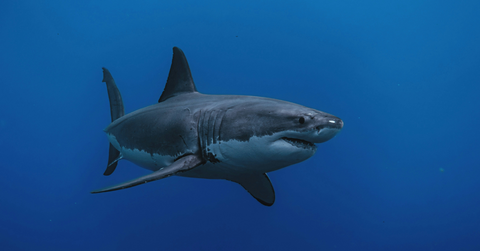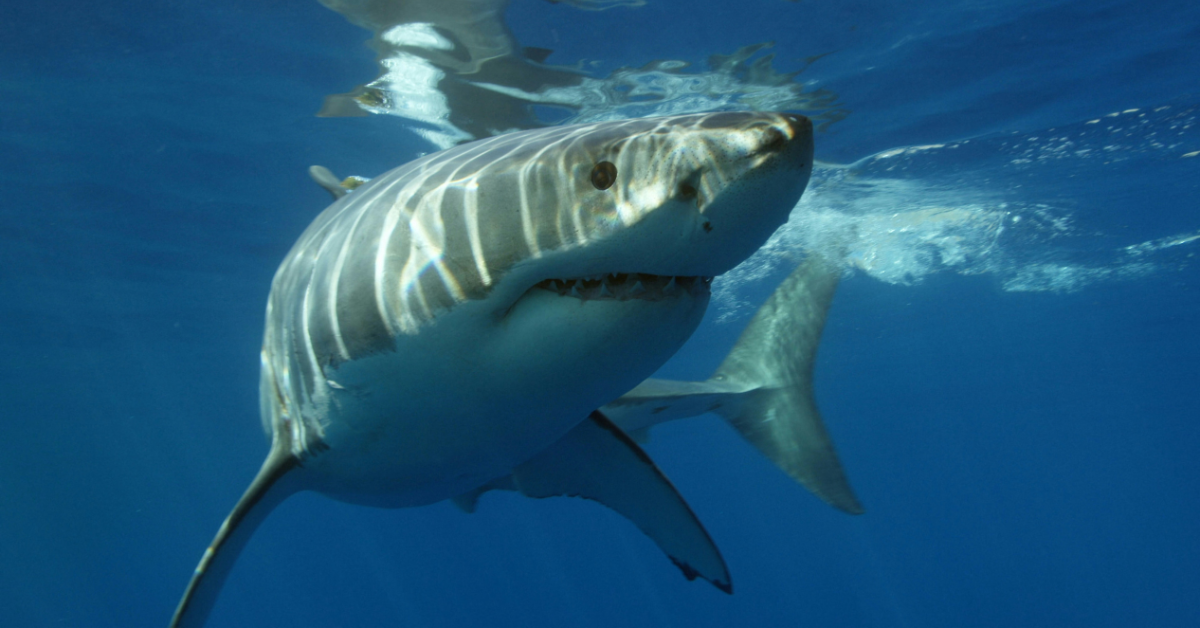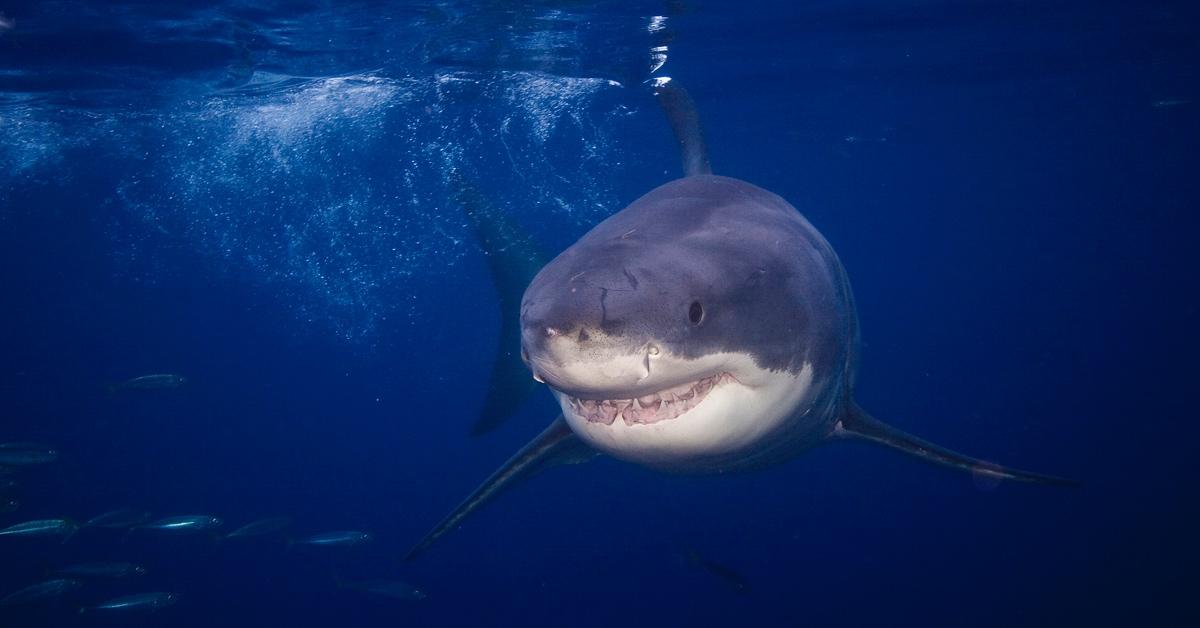The "White Shark Café" Is a Marine Phenomenon With the Cutest Name
You're unlikely to score an invite to the hottest eatery in the great white shark community.
Published Sept. 12 2024, 5:44 p.m. ET

Scientists have uncovered a secret hideout for great white sharks, sometimes known as white sharks, traveling the ocean by way of California. The spot, aptly named the White Shark Café, was uncovered while marine scientists were taking a closer look at the path of migration for the oft-feared species.
What researchers found when electronic tracking tags started pinning in the middle of the Pacific left them perplexed ... and a bit excited about their discovery. Read more about the White Shark Café below, and learn why they think the apex predators are making the pit stop during their travels.

What is the White Shark Café?
No, the White Shark Café isn't the latest coffee spot on downtown Main Street — it's an underwater meeting spot for great white sharks as they migrate, full of plenty of marine life for snacking.
Researchers at the Monterey Bay Aquarium Research Institute (MBARI), Stanford University’s Hopkins Marine Station, the Monterey Bay Aquarium, the Schmidt Ocean Institute (SOI), and other organizations released a statement after the initial 2018 discovery, celebrating the find.
They were able to get a closer look at what was going on thanks to some remotely operated vehicles (ROVs), where they furthered their study of the spot, completing DNA tests and taking detailed observations of what was going on in the area they previously assumed would be a lifeless wasteland.
The group discovered sharks were swimming 1,500 feet beneath the surface, diving much deeper than previously presumed and giving them much to ponder about the gathering spot.
Why are there so many great white sharks in California?
It makes sense that scientists were studying the sharks located off California's coast because there's just so many of them. White sharks are protected in the state, and fishing for them is highly illegal, per the California Department of Fish and Wildlife.
Still, the state does see an unusually high number of the predator swimming off its shores, and that may have a lot to do with the warm ocean temperatures and abundance of the shark's favorite snacks, according to Surfer magazine.
Fish, seals, and sting rays are all found near the Golden State's coast, which makes this area a prime spot for the sharks to set up shop... even if that does leave swimmers and surfers feeling a little nervous when they head into the water.

Here's what to do if you see a shark while surfing or swimming:
Nothing is likely to set your heart racing like spotting a familiar fin while you're in the water, but experts say keeping a cool head (and remembering these tips) may help you survive an encounter with a shark.
First, prevention is key, according to CNN. Stay out of the water during their prime feeding time, which is around dusk and dawn. Next, avoid areas where sharks tend to congregate, like river mouths and where people are fishing.
You'll also want to avoid anything flashy that could make you resemble a fish, like jewelry or anything that blinks.
You should also remain as calm as possible. Splashing and screaming will only make you look more appealing to a shark. Instead, CNN suggests keeping the shark in your sights with slow movements while maintaining eye contact with them as best you can.
If the worst happens and you end up under attack, CNN suggests it's time to fight back. This may mean trying to poke the shark in the eye, hit them in the gills, or use whatever you have on you as a weapon. However, if the shark does not approach you first, do not lash out — focus on calmly getting away.
The good news is that you're unlikely to find yourself in that position since shark encounters remain fairly low. It's always best to stay aware when you're in the ocean and to avoid doing anything that will make you a tasty target for these massive creatures.